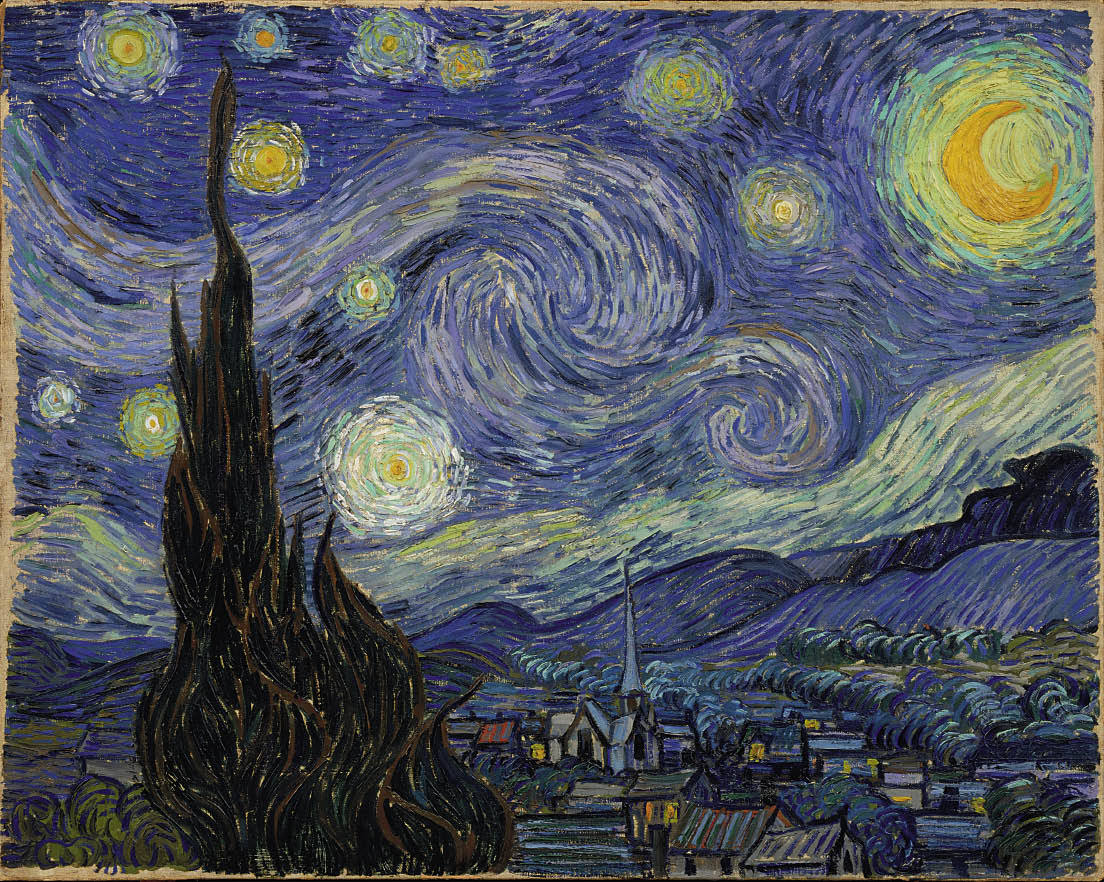Van Gogh and the Colours of the Night
Van Gogh Museum, Amsterdam until 7 June
Remembering his former teacher Vincent van Gogh, the painter Anton Kerssemakers described a walk one evening in 1884 from Nuenen to Eindhoven when Vincent suddenly stopped before the sunset, framed it in his hands and, half closing his eyes, cried out, ‘My God, how does such a fellow — whether God, or whatever you want to call him — how does he do that? We must be able to do that too!’
The hours of sunset, dusk and darkness — outdoors and in — always fascinated van Gogh. Perhaps it was the sense of sacredness that the pastor’s son could never separate from them, or perhaps it was the challenge to the modern painter posed by their colours — more likely, it was a mixture of the two. For whatever reason, the artist’s oeuvre includes a disproportionate number of after-hours subjects, 30 of which are now under the spotlight in the Van Gogh Museum’s latest exhibition.
The Van Gogh Museum is good at reminding us that the artist we often think of as honorary Mediterranean was actually Northern European to his boots. The museum’s 2006 exhibition Vincent Van Gogh and Expressionism revealed his importance to the German Expressionists; this one demonstrates his debt to the Dutch masters, comparing ‘The Potato Eaters’ (1885) with ‘The Holy Family at Night’ from the studio of Rembrandt. It also suggests that the French models for his nocturnes were not his Impressionist contemporaries but the earlier school of Barbizon painters, whose poetic feelings about the night chimed with his own, and whose use of colour came as a revelation. In Camille Corot’s ‘Moonlight’ (c.1855), Jean-François Millet’s ‘Starry Night’ (c.1851) and Jules Dupré’s ‘Evening’ (1875–80) — all hanging in the show — van Gogh discovered the ability to paint ‘DARKNESS that is still COLOUR’ that he missed in the grey tonal palette of his native Hague School.
The first daubs of genius are always fascinating, and this exhibition springs a few surprises. In the watercolour ‘Landscape with a Stack of Peat and Farmhouses’, painted in Drenthe — where Vincent went in 1883 for rural inspiration, only to find it ‘as irritatingly tedious and fatiguing as the desert’ — he somehow conveys the loneliness of twilight despite handling his colours with all the subtlety of poster paints. In an oil of the same year, ‘Twilight, Old Farmhouses in Loosduinen’, we feel his technical frustration with that medium also in the broad flat smears of over-oily colour, scored impatiently with the back of the brush. He was inspired by Dupré’s ‘Evening’ but unable to emulate his technique.
Technical liberation came in France, with the discovery of broken colour. Within a year of arriving in Paris in 1886 van Gogh produced a ‘Sunset at Montmartre’ as light and fluffy as a Berthe Morisot. The following year in Provence his ‘Stevedores in Arles’, dashed off in dark-blue paint against an orange sunset, gives a curious glimpse of the facile painter a better-adjusted Vincent might have become. But that same year, he finds his expressive form with an evening subject already made famous by his hero Millet.
Van Gogh’s first attempt at ‘The Sower’ was a failure. The symbolism of the solitary figure striding over the bright blue-shadowed field against the background of a blazing yellow sunset was lost in the dazzle of his surroundings. But in version two, encouraged by Gauguin, van Gogh cracked it. Here the dark silhouetted figure, bent to his task and wearing the sun’s disc like a giant halo, casts his seed as a magician might cast a spell. With its lime-green sky, lilac fields and twisting tree more reminiscent of a Dutch willow than a Mediterranean olive, this is a work of almost pure imagination. But that same year van Gogh also painted two night scenes in situ. ‘Terrace of a Café at Night (Place du Forum)’ — only the sketch is in the show — and ‘The Starry Night over the Rhone’ were both painted under the stars, and outsized stars dominate both paintings.
In a letter of September 1888, van Gogh confessed to ‘having a tremendous need for, shall I say the word — religion —- so I go outside at night to paint the stars’. More disturbingly, he later wrote: ‘The sight of the stars always makes me dream in as simple a way as the black spots on the map representing towns and villages make me dream.’ And why should they be any less accessible, he reasoned? ‘Just as we take the train to go to Tarascon or Rouen, we take death to go to a star.’
In ‘The Starry Night’ (1889), painted in the hospital at St Remy, the stars are so close that the final journey hardly seems necessary. As with ‘The Sower’, van Gogh had the precedent of Millet’s ‘Starry Night’ before him. But while Millet’s stars fizz like fireworks in aureoles of smoke — and two even shoot like rockets across the sky — van Gogh’s burn and spin like giant fireballs, tossed on celestial whiplash winds. From the sleeping village, two small symbols of eternity — cypress and steeple — lift their puny points to touch the welkin. No normal person could have painted such a picture. Millet’s ‘Starry Night’ is entrancing, but van Gogh’s makes us thank our stars he was mad.






Comments